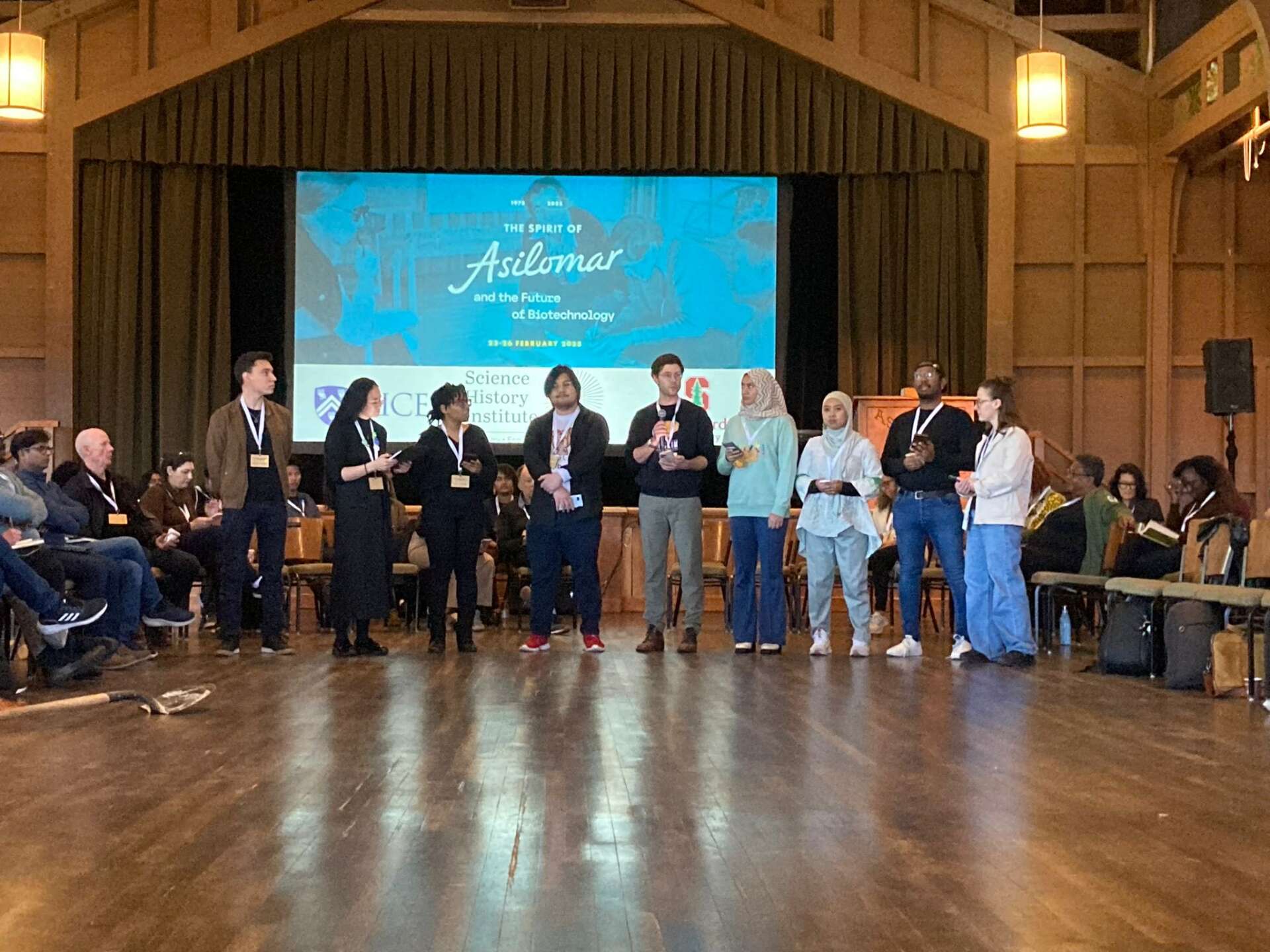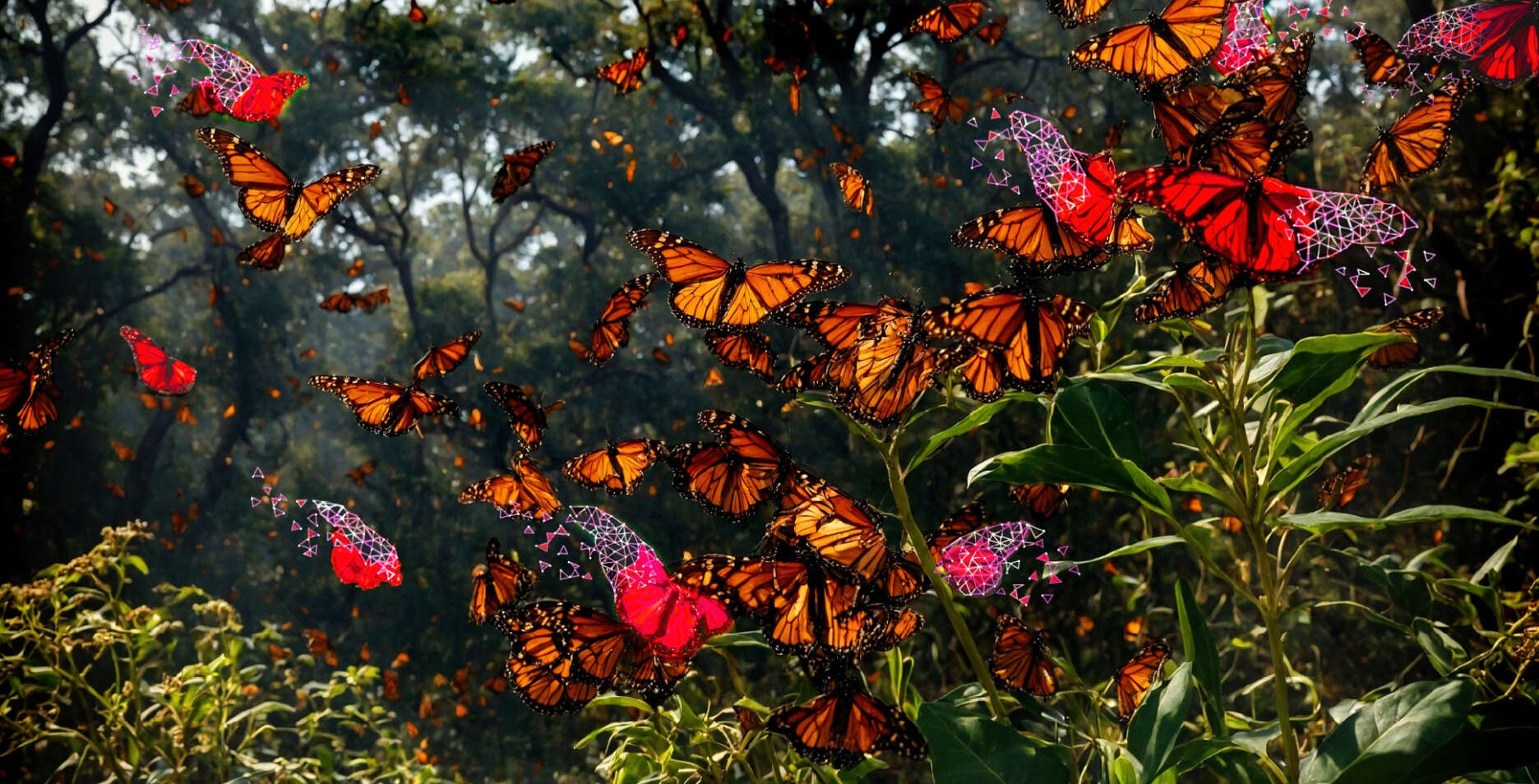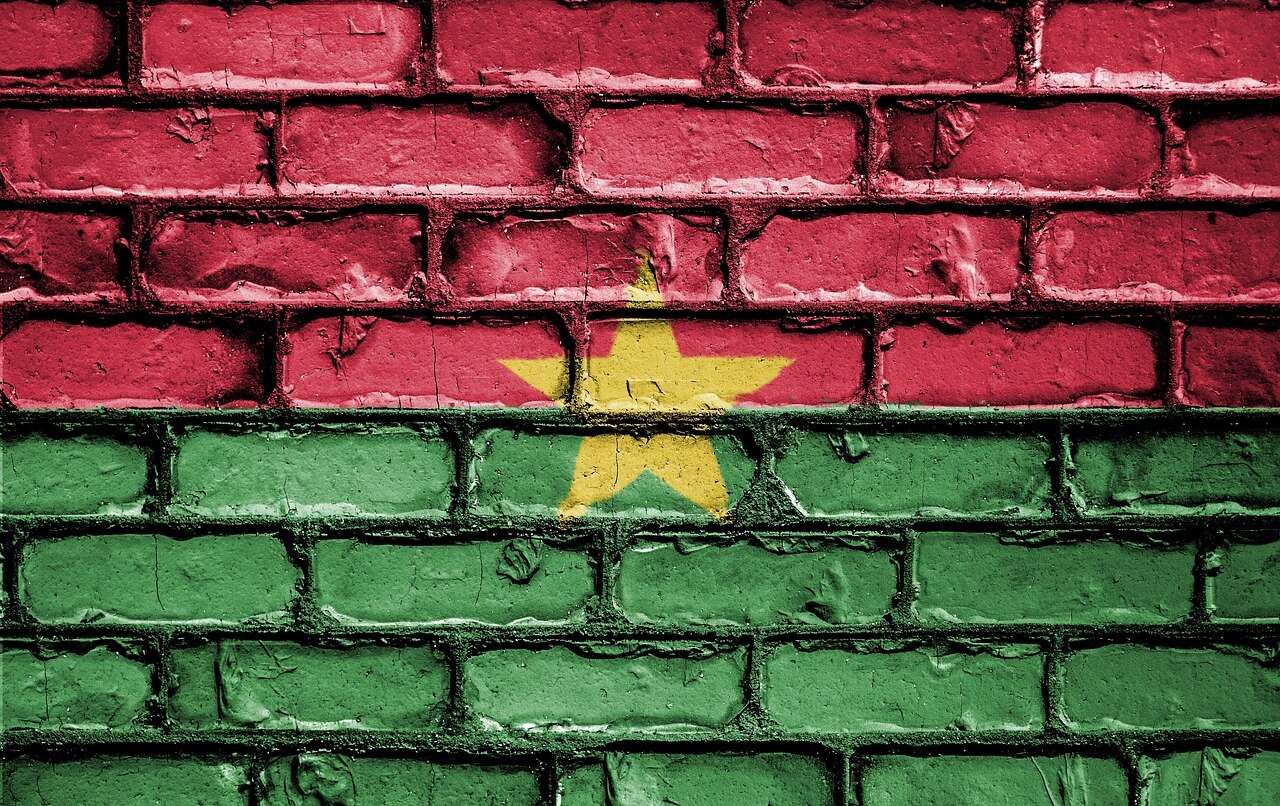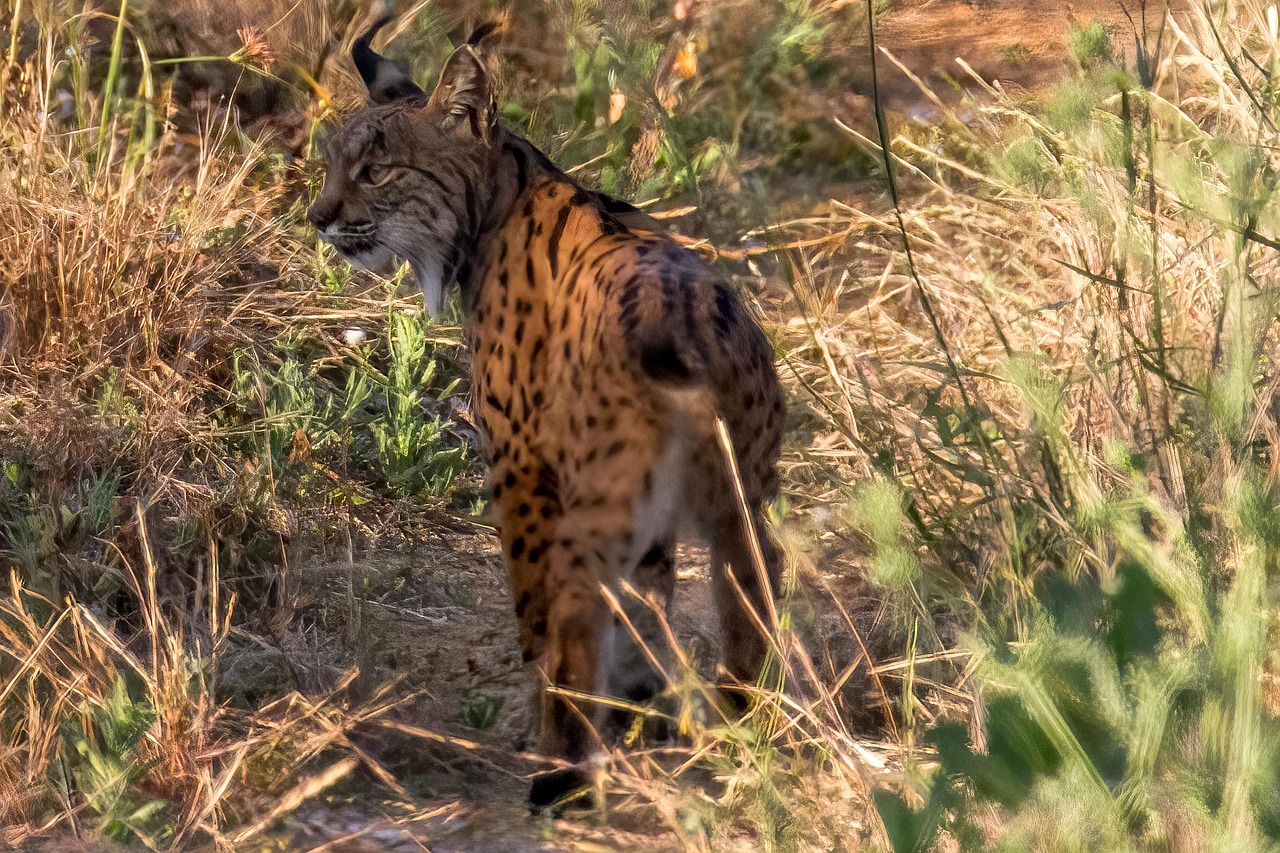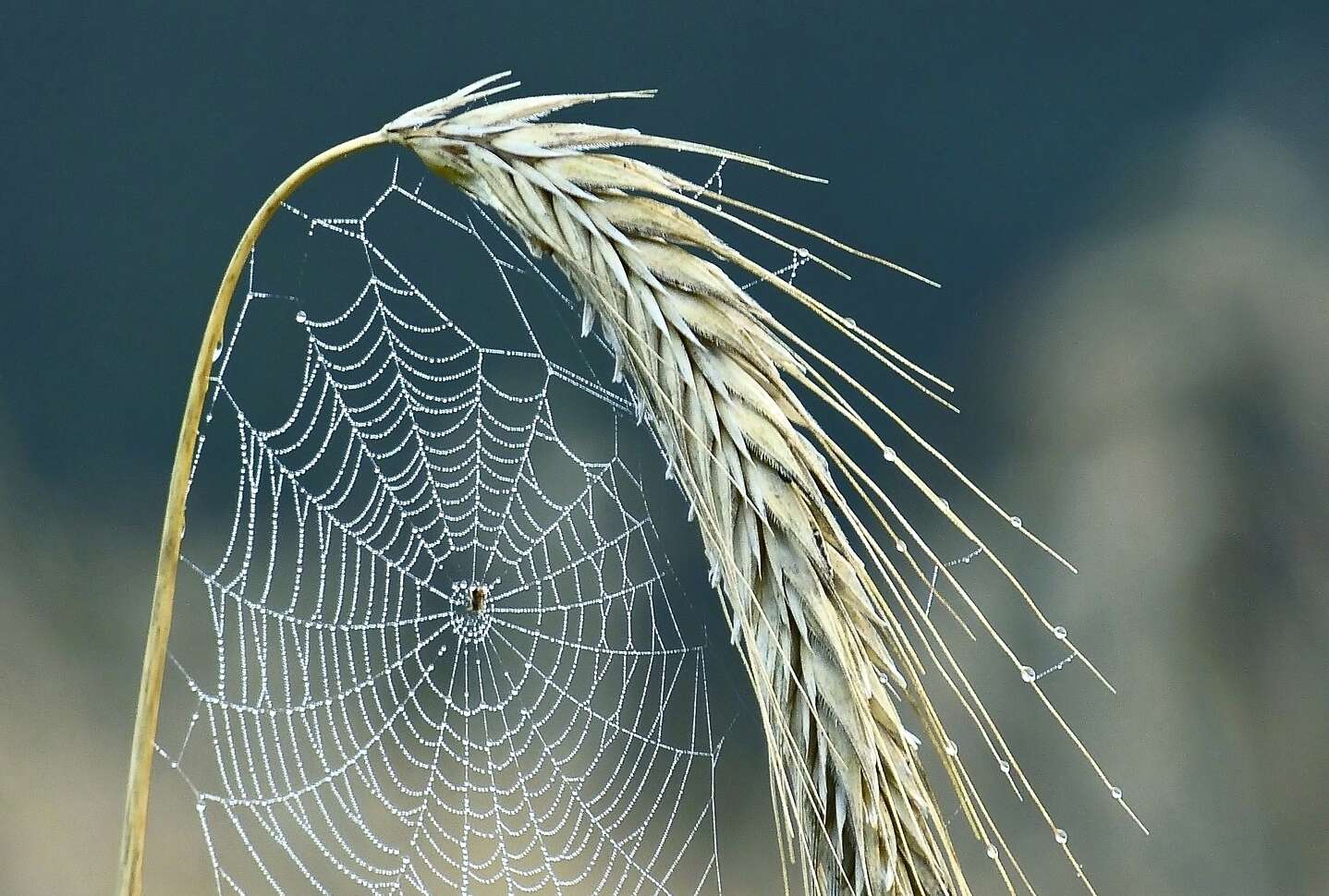Fifty years after the famous 1975 Asilomar biosafety conference — a moment of self-reflection and self-regulation of molecular biologists— a group of historians and bioengineers organized a three-day conference in the same place to reflect and learn for the future. Naomi Kosmehl of Save Our Seeds got hold of a grant to attend this exclusive event.
By Naomi Kosmehl, Save Our Seeds
In late February 2025, I traveled to the iconic Asilomar Conference Grounds in Monterey Bay as one of 50 “Next Generation Leaders” invited to take part in the “Spirit of Asilomar” conference. The meeting marked the 50th anniversary of the 1975 “Asilomar Conference on Recombinant DNA” that is often referred to as the birthplace of biotech self-regulation in the US. I came to find out how today’s scientists wanted to take responsibility for the risks inherent in their work, and how they wanted to make sure they didn’t cause harm.
The conference brought together around 300 people with backgrounds in synthetic biology research, social sciences, art, journalism and NGOs. While the stated aim was to gather “a diverse group of experts and voices … arriving from around the world“, most participants effectively worked in biotechnology and, although many were born abroad, most were trained and based in the US biotech sector. There were several attendants from the Global South, but they weren’t involved in organizing or structuring the working groups, raising questions about their ability to influence discussions or outcomes.
Issues of trust
The common theme throughout the event wasn’t concern over biosafety or ethics — it was a perceived lack of public trust in biotechnology. Some working group exchanges would suddenly turn into PR strategy discussions about how best to lobby ministers using biotech success stories. Some others — particularly among the Next Generation Leaders — took a different approach. These early career researchers advocated for “inclusive language”, “community-led biotechnology”, “equitable benefit sharing”, and “data sovereignty”. They believed the best way to build public trust was to “take the white man out of the documents”. By building decentralized, open-access labs and research centers, they were hoping to “democratize biotechnology” so that communities could develop their own biotech solutions to local problems.
It felt rather surreal that no one — neither the seasoned PR strategists nor the energetic Next Gen Leaders — was asking the question why trust had been broken in the first place. Had biotechnology failed to deliver? Did people feel developers hadn’t told them the full story? Had any damage been done?
Move fast and stop worrying
I had gone to the “Spirit of Asilomar” event believing that we would look back at the past 50 years of biotech development and apply the lessons learned to the next 50 years. After all, the organizers had announced that participants would “convene to learn from fifty years of history”.
Instead, I found myself in PR boot camps and casual conversations with scientists who said things like, “I don’t want to be governed, I want to move fast, I want to move as fast as possible.” Fifty years ago, researchers advocated self-regulation to preempt government oversight. In 2025, with a new U.S. government unlikely to regulate much in this field, there was a unique opportunity take self-regulation to the next level. It didn’t happen.
As someone who regularly attends negotiations of the UN Convention on Biological Diversity (CBD), I was struck to see some familiar faces — people who are pushing to weaken biotech governance at side events and in hallway discussions at the CBD and advocate for increased funding for GMO deployment in the Global South. In Asilomar, they made ample use of the microphones and stages. One participant in particular repeatedly urged the room to oppose further GMO regulation, insisting that the Global South deserved access to technologies “proven safe” over the past decades.
Little concern about unintended consequences
Participants didn’t seem too concerned about inherent limitations or unintended consequences of biotechnology that could pose risks. The risks they saw came mainly from “bad actors” beyond their circles. These people could create pathogens and turn them into bioweapons. But nothing bad could come out of their own work, could it? Unless someone ventured to create “mirror life”— but that discussion had already taken place prior to the conference. It was overshadowed by techno-optimism about other biotechnology creations.
Still, there were proposals for an Environmental Safety Level Framework (ESL) for beyond-containment biotechnology, similar to the biosafety level framework for labs (BSL‑1 to BSL‑4). On the first day they started strong, with different safety levels for managed environments such as farms versus unmanaged, wild environments. On the last day, participants suggested the framework be renamed altogether because “safety” didn’t really capture its goal. It should also reflect the benefits of releasing biotechnology products into the environment. A shift in framing that was symptomatic of the whole week.
The Next Big Thing
Among the more dynamic sessions was one on “synthetic cells”. Facilitated by researchers from the J. Craig Venter Institute —also active in the CBD negotiations—the session presented a techno-optimistic vision in which synthetic cells solve everything from climate change to public health. Synthetic cells, also known as “artificial” or “minimal cells”, are engineered systems designed to mimic certain functions, behaviors, or structures of biological cells. These entities are created using a combination of biological and synthetic components. In a private conversation, one developer said that until recently, they hadn’t thought it was anything more than a hype. But now they felt confident this technology would hold. Because these cells are quite minimalist and designed by scientists, they are believed to be safe to use, as developers believes they can program them and thereby predict exactly how the cells will behave. In the long term, synthetic cells should be used outside the lab, but for now they are too fragile to survive in nature.
Another major topic on the Asilomar agenda was Artificial Intelligence. Attendees had diverse perspectives: some saw it as hype and were reluctant to use it in their labs. Others were using it already but worried about “bad actors” abusing their open-source tools to create pathogens. Some didn’t think the technology posed any novel risks, and a small group opposed any regulation at all.
Four working groups had been planned originally around AI, ranging from risk management to data governance. Only two actually materialized. Discussions included proposals for a tiered digital sequence information platform —from open access to strictly licensed use — and watermarking of genetic code to prevent misuse.
One researcher already using AI in her lab claimed that AI would be involved in 90% of biotech development within a decade. This would widen the gap between academia and industry as AI requires vast computing power and even larger datasets — two things universities typically lack. When another attendee suggested that funding from the U.S. Defense Advanced Research Projects Agency (DARPA) should be rejected to avoid the risk of dual-use, the idea was met with polite laughter. “Then we wouldn’t have any projects left,” someone replied.
Nature conservation and Indigenous “natural capital”
The conference also revealed that, perhaps in response to the trust issues mentioned above, the biotech sector is reaching out to unlikely allies—conservationists and Indigenous Peoples. Some scientists genuinely believed that biotechnology could protect us from climate change and help us halt biodiversity loss. They thought it was interesting to talk to conservationists who want to eradicate invasive species —non-native plants, animals, or microorganisms introduced to a new ecosystem that cause harm—or bring back extinct species.
A working group on “Indigenous biotechnology” was also established. While this might sound unlikely to those involved in UN CBD negotiations — where Indigenous Peoples typically call for strict regulation of biotechnology. At Asilomar, however, Indigenous Peoples were portrayed as “owners of natural capital” entitled to “data sovereignty,” framing their role in ways that support, rather than challenge, the biotech agenda.
Fast forward, without pause
All in all, Asilomar 2025 wasn’t a moment to reflect and learn from past mistakes. It wasn’t a moment for scientists to take responsibility, at an early stage, for the risks inherent in their work. Instead, it was a snapshot of a sector that is rushing forward — eager to be trusted, reluctant to ask why it isn’t.
The conference showed that biotech developers will press ahead with just about anything, arguing that it will save our climate and nature, and protect Indigenous People’s rights. Questions about biosafety, corporate ownership or harm are brushed aside as interventions in nature are becoming deeper and less controllable. This misplaced confidence in the harmlessness of synthetic cells risks enabling increasingly reckless projects with military funding.
It was a sobering experience for me to enter these circles and see how far removed some biotech developers really are from taking responsibility. Without saying so, this Asilomar conference was a clear call for the control of society and the public over this sector.
Photo ©Naomi Kosmehl — Next Generation Leaders at the “Spirit of Asilomar” conference

